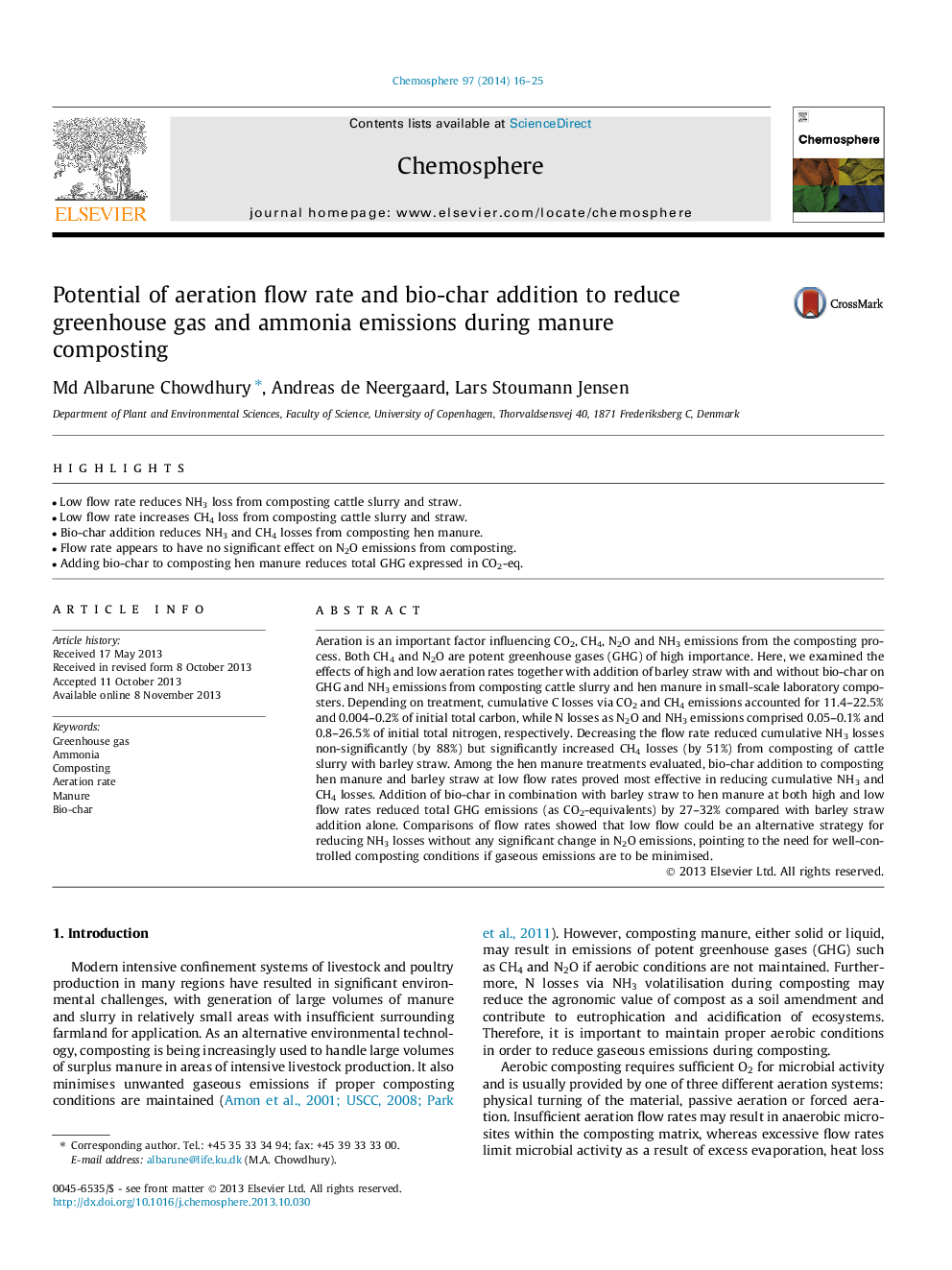| کد مقاله | کد نشریه | سال انتشار | مقاله انگلیسی | نسخه تمام متن |
|---|---|---|---|---|
| 4408980 | 1618874 | 2014 | 10 صفحه PDF | دانلود رایگان |
• Low flow rate reduces NH3 loss from composting cattle slurry and straw.
• Low flow rate increases CH4 loss from composting cattle slurry and straw.
• Bio-char addition reduces NH3 and CH4 losses from composting hen manure.
• Flow rate appears to have no significant effect on N2O emissions from composting.
• Adding bio-char to composting hen manure reduces total GHG expressed in CO2-eq.
Aeration is an important factor influencing CO2, CH4, N2O and NH3 emissions from the composting process. Both CH4 and N2O are potent greenhouse gases (GHG) of high importance. Here, we examined the effects of high and low aeration rates together with addition of barley straw with and without bio-char on GHG and NH3 emissions from composting cattle slurry and hen manure in small-scale laboratory composters. Depending on treatment, cumulative C losses via CO2 and CH4 emissions accounted for 11.4–22.5% and 0.004–0.2% of initial total carbon, while N losses as N2O and NH3 emissions comprised 0.05–0.1% and 0.8–26.5% of initial total nitrogen, respectively. Decreasing the flow rate reduced cumulative NH3 losses non-significantly (by 88%) but significantly increased CH4 losses (by 51%) from composting of cattle slurry with barley straw. Among the hen manure treatments evaluated, bio-char addition to composting hen manure and barley straw at low flow rates proved most effective in reducing cumulative NH3 and CH4 losses. Addition of bio-char in combination with barley straw to hen manure at both high and low flow rates reduced total GHG emissions (as CO2-equivalents) by 27–32% compared with barley straw addition alone. Comparisons of flow rates showed that low flow could be an alternative strategy for reducing NH3 losses without any significant change in N2O emissions, pointing to the need for well-controlled composting conditions if gaseous emissions are to be minimised.
Journal: Chemosphere - Volume 97, February 2014, Pages 16–25
